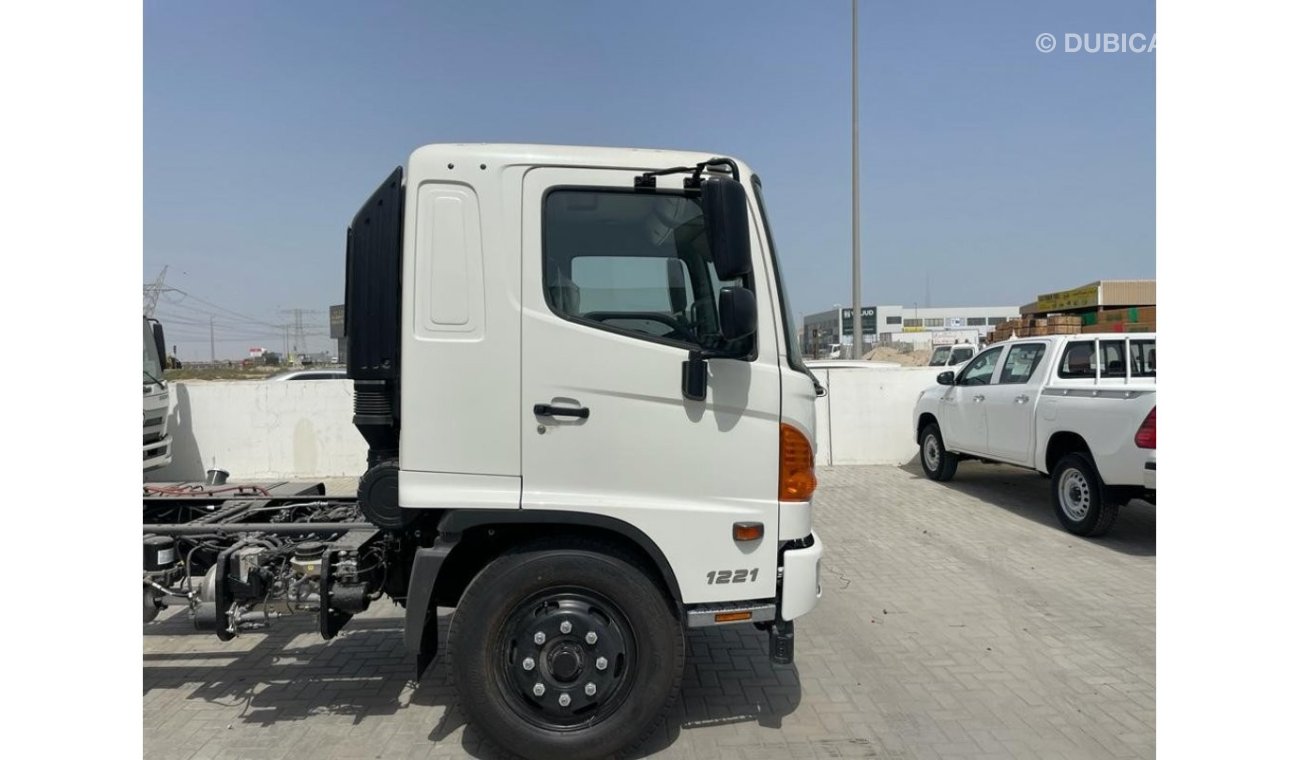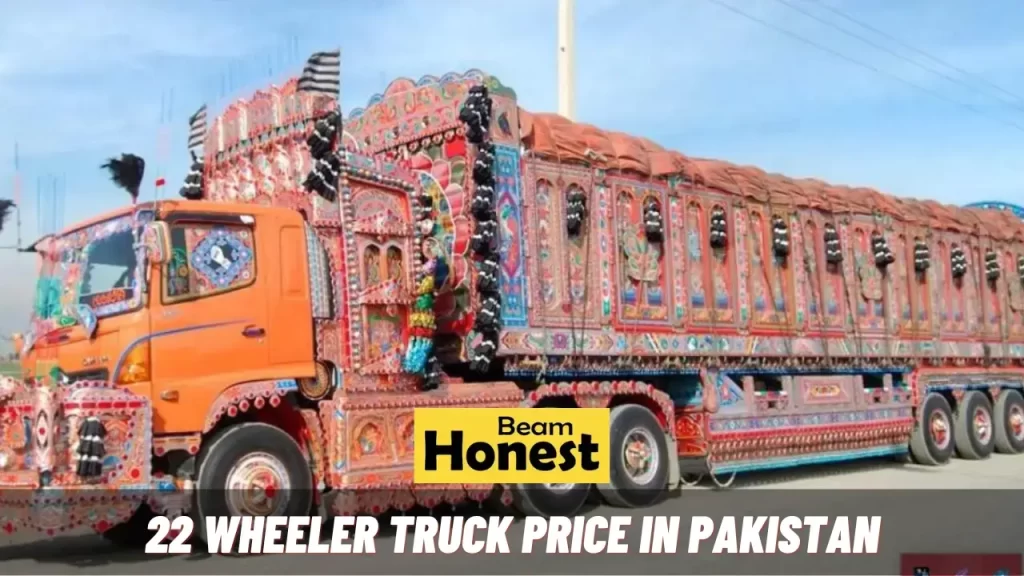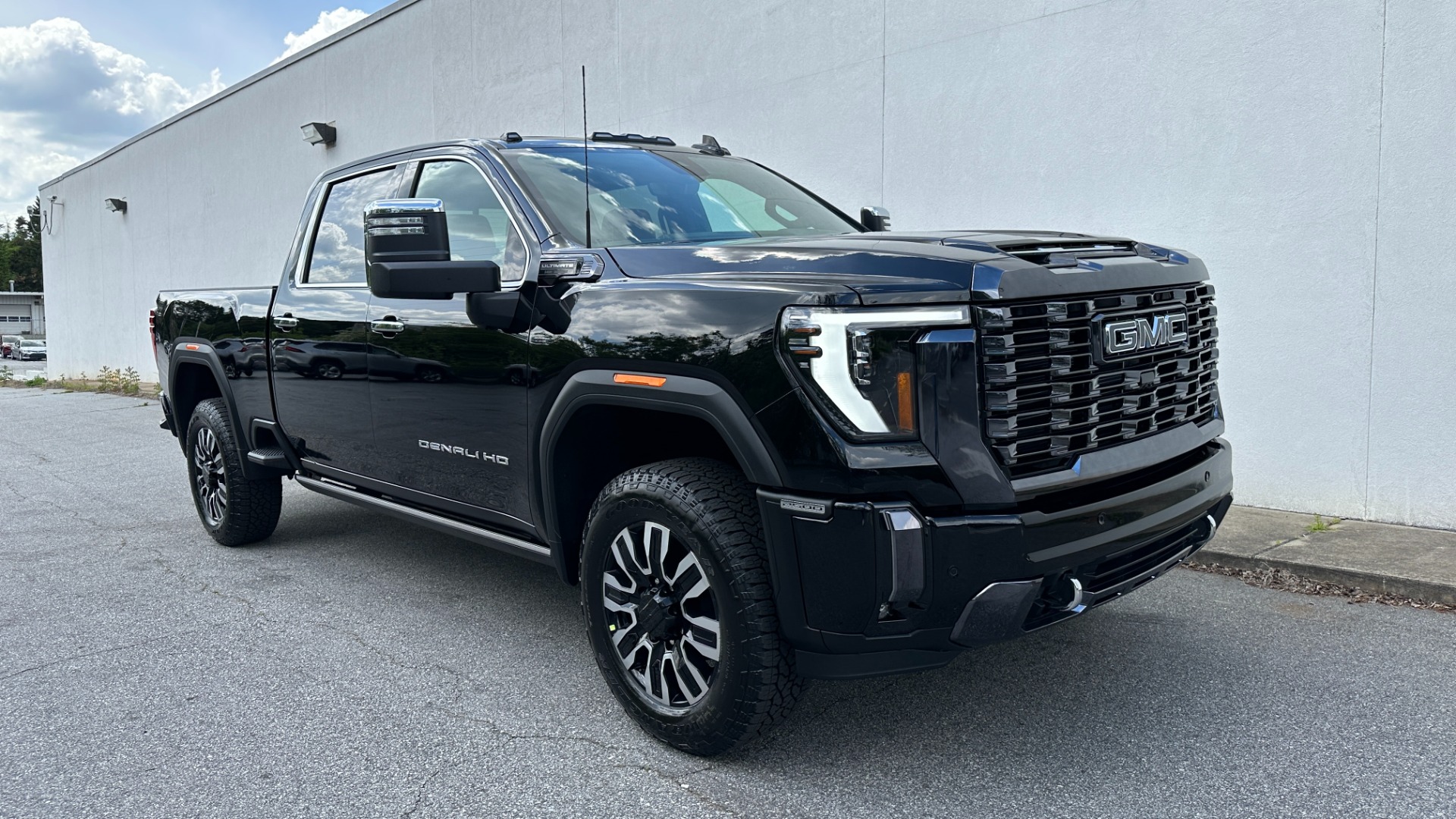Hino Truck Price Range: A Comprehensive Guide for Buyers cars.truckstrend.com
Investing in a commercial truck is a significant decision for any business, and understanding the price range is a crucial first step. Hino Trucks, a subsidiary of Toyota Motor Corporation, have carved out a formidable reputation in the commercial vehicle market for their legendary reliability, fuel efficiency, and robust build quality. When considering a Hino, the "price range" isn’t a single, static figure but rather a dynamic spectrum influenced by a myriad of factors, from the specific model series and configuration to additional features, market conditions, and whether you’re buying new or used.
This comprehensive guide aims to demystify the Hino truck price range, providing you with the insights necessary to make an informed purchasing decision. We’ll explore the various factors that influence costs, break down prices by series, discuss the impact of customization, and offer practical advice for navigating the market, ensuring you find a Hino that perfectly balances your operational needs with your budget.
Hino Truck Price Range: A Comprehensive Guide for Buyers
Understanding Hino’s Market Position and Value Proposition
Hino’s appeal lies in its commitment to delivering a low total cost of ownership (TCO). While the initial purchase price is an important consideration, Hino trucks are designed for longevity, efficiency, and minimal downtime. This means lower operating costs over the vehicle’s lifespan due to better fuel economy, reduced maintenance requirements, and a strong resale value.
Hino’s engineering benefits from Toyota’s global expertise, ensuring that each truck is built with precision and durability. This reputation for quality translates into their pricing strategy: Hino trucks are often positioned competitively, offering a premium on reliability and performance that justifies their cost for businesses seeking a dependable workhorse. They are an investment in consistent operation, which for many businesses, is priceless.
Factors Influencing Hino Truck Prices
The price of a Hino truck is not a one-size-fits-all figure. Several key variables contribute to the final sticker price. Understanding these factors will empower you to better estimate costs and negotiate effectively.
-
Model Series: Hino offers distinct series tailored to different duty cycles:

- Hino 300 Series: Light-duty cab-over trucks, ideal for urban delivery, landscaping, and last-mile logistics.
- Hino 500 Series: Medium-duty conventional and cab-over trucks, versatile for various vocational applications, regional distribution, and heavier hauling.
- Hino 700 Series: Heavy-duty trucks designed for long-haul transport, construction, and specialized heavy vocational tasks. The heavier the duty, the higher the price.

-
Gross Vehicle Weight Rating (GVWR) / Gross Combined Weight Rating (GCWR): These ratings dictate the maximum operating weight of the truck and its trailer (if applicable). Higher GVWR/GCWR usually means a more robust chassis, larger engine, and heavier-duty components, all of which increase the price.

Cab Configuration:
- Standard Cab: Most common, offering seating for two or three.
- Crew Cab: Provides additional seating for a larger work crew, adding to the cost due to extended chassis and interior features.
-
Engine and Transmission: Different engine sizes and power outputs are available within each series. Similarly, automatic transmissions typically command a higher price than manual options, though they often offer greater ease of use and fuel efficiency benefits in certain applications.
-
Chassis Options: Variations in wheelbase, frame strength, suspension systems, and axle configurations can significantly impact the base price. Longer wheelbases or reinforced frames for specialized applications will naturally be more expensive.
-
Body Type and Upfitting: Crucially, the base price of a Hino truck often refers to the chassis-cab only. The specialized body (e.g., box truck, dump truck, flatbed, refuse compactor, refrigerated unit) is an additional cost, often added by third-party upfitters. These can range from a few thousand dollars for a simple flatbed to tens of thousands for complex vocational bodies or refrigeration units.
-
Features and Technology: Modern trucks come equipped with advanced features.
- Safety Systems (ADAS): Lane departure warning, pre-collision systems, adaptive cruise control.
- Telematics & Connectivity: Fleet management solutions, GPS tracking.
- Comfort & Convenience: Premium seating, enhanced infotainment, power accessories.
- Fuel-Saving Technologies: Aerodynamic enhancements, idle shutdown systems.
- The more advanced features you opt for, the higher the price.
-
New vs. Used: A new Hino truck will always be at the top of the price spectrum, offering the latest technology, full warranty, and customizable options. Used Hino trucks, however, provide a more budget-friendly entry point into the brand, with prices varying widely based on age, mileage, condition, and maintenance history.
-
Location and Dealership: Prices can vary slightly by region due to transportation costs, local taxes, and dealership specific pricing strategies or promotions.
-
Market Conditions: Supply chain disruptions, raw material costs, and overall economic conditions can influence truck prices, leading to fluctuations over time.
Hino Truck Price Range by Series (Estimated New Chassis Prices)
It’s important to reiterate that the prices provided below are estimated ranges for new chassis-cab models and do not include the cost of the body/upfitting, taxes, delivery fees, or dealer-specific charges. For precise quotes, always contact an authorized Hino dealer.
| Hino Series | Typical GVWR Range (lbs) | Estimated New Chassis Price Range (USD) | Key Applications | Estimated Used Chassis Price Range (USD)* |
|---|---|---|---|---|
| Hino 300 Series | 10,000 – 19,500 | $45,000 – $75,000+ | Urban delivery, courier services, landscaping, plumbing, electrical, small refrigerated transport, light towing, moving trucks. | $20,000 – $55,000+ (Depending on year, mileage, condition. Older, higher-mileage units will be at the lower end, while newer, well-maintained units approach the lower end of new prices.) |
| Hino 500 Series | 23,000 – 60,000 | $70,000 – $120,000+ | Regional distribution, vocational (dump, refuse, concrete mixer, utility), freight, beverage delivery, medium-duty construction. | $35,000 – $90,000+ (Wider range due to diverse applications and GVWRs. A well-maintained 3-5 year old unit will hold significant value, while older, high-hour vocational trucks will be considerably less.) |
| Hino 700 Series | 60,000+ (Class 8) | $100,000 – $180,000+ | Long-haul transport, heavy vocational (heavy-duty dump, concrete pump, specialized refuse), logging, heavy equipment transport. | $50,000 – $140,000+ (This category sees the most significant depreciation with age and mileage, but specialized, well-maintained heavy-duty trucks can retain substantial value, especially if configured for specific, high-demand tasks.) |
Disclaimer: These used price ranges are highly variable and depend heavily on the truck’s age, mileage, overall condition, maintenance history, specific configuration, and regional market demand. Always conduct a thorough inspection before purchasing a used truck.
The Cost of Upfitting and Customization
As mentioned, the base chassis price is just one part of the equation. The "upfitting" process—adding the specific body or equipment needed for your business—can add anywhere from $10,000 to over $100,000+ to the total vehicle cost.
- Box Bodies: (Dry freight, refrigerated, curtain side) – Common for delivery and logistics.
- Flatbeds/Stake Bodies: For general hauling, construction materials.
- Dump Bodies: For construction, landscaping, waste removal.
- Refuse Bodies: Specialized for garbage collection.
- Service Bodies: For tradespeople requiring organized storage for tools and parts.
- Specialized Equipment: Cranes, liftgates, snow plows, concrete mixers, etc.
When budgeting, always factor in the complete cost: chassis + body + any specialized equipment + delivery/dealer fees + taxes. Many Hino dealers offer turn-key solutions, allowing you to purchase the complete truck with the body already installed.
Navigating the Used Hino Truck Market
For businesses with tighter budgets or those just starting out, the used Hino truck market presents an attractive alternative.
Benefits:
- Lower Initial Investment: Significantly reduced purchase price.
- Immediate Availability: Used trucks are often ready to go, unlike new trucks which may have lead times for manufacturing and upfitting.
- Depreciation Avoidance: The steepest depreciation occurs in the first few years, so buying used means letting someone else take that hit.
Considerations:
- Condition: Thoroughly inspect the truck for wear and tear, rust, and mechanical issues.
- Mileage and Age: Higher mileage generally means more wear on components.
- Maintenance History: Request detailed service records to understand how well the truck was cared for.
- Warranty: Used trucks typically come with limited or no manufacturer warranty, though some certified pre-owned programs exist.
- Technology: Older models may lack the latest safety or fuel-efficiency technologies.
Where to Look:
- Authorized Hino Dealerships: Often offer certified pre-owned trucks with inspections and limited warranties.
- Online Marketplaces: Websites like TruckPaper, Commercial Truck Trader, and local classifieds.
- Auctions: Can yield good deals but come with higher risk due to limited inspection opportunities.
Practical Advice for Buyers
- Define Your Needs Precisely: Before looking at prices, determine the exact GVWR, payload capacity, body type, and features your operation requires. Over-specifying can lead to unnecessary costs, while under-specifying can result in an inadequate vehicle.
- Budget Beyond the Purchase Price: Remember to factor in ongoing operational costs: fuel, insurance, regular maintenance, tires, and potential repairs. Hino’s reputation for lower TCO helps, but these costs are still significant.
- Research and Compare: Obtain quotes from multiple authorized Hino dealerships. Don’t be afraid to compare prices for similar configurations.
- Consider Financing Options: Hino offers various financing and leasing programs through Hino Financial Services, which can make a new truck more accessible. Leasing can also offer tax advantages and lower monthly payments.
- Prioritize Total Cost of Ownership (TCO): While a lower initial price is tempting, a truck with better fuel efficiency, higher reliability, and lower maintenance costs can save you significantly more money over its lifespan. Hino excels in this area.
- Test Drive and Inspect: Always test drive any truck you’re seriously considering, especially used ones. For used trucks, a pre-purchase inspection by an independent mechanic is highly recommended.
- Negotiate: Truck prices often have some room for negotiation. Be prepared with your research and be ready to walk away if the deal isn’t right.
Potential Challenges and Solutions
- Challenge: Budget Constraints.
- Solution: Explore the robust used Hino market. Consider leasing instead of buying outright to spread costs. Re-evaluate if a smaller Hino series (e.g., a 300 instead of a 500) could meet your core needs.
- Challenge: Complexity of Upfitting.
- Solution: Work closely with your Hino dealer, as many have established relationships with reputable upfitters. Clearly communicate your operational needs to ensure the correct body and equipment are specified. Get detailed quotes for the full, turn-key vehicle.
- Challenge: Market Volatility and Lead Times.
- Solution: Plan well in advance for new truck purchases, as supply chain issues can cause delays. Be flexible with specifications if certain components are on backorder. For urgent needs, the used market might offer quicker solutions.
Conclusion
The Hino truck price range is as diverse as the applications these reliable vehicles serve. From the agile 300 Series light-duty trucks to the robust 700 Series heavy-haulers, Hino offers a solution for nearly every commercial transport need. While the initial investment can be substantial, the brand’s unwavering commitment to quality, durability, and fuel efficiency translates into a compelling total cost of ownership that delivers long-term value.
By understanding the key factors that influence pricing, diligently researching your options, and carefully budgeting for both the purchase and ongoing operational costs, you can confidently navigate the Hino truck market. Whether you opt for a brand-new model customized to your exact specifications or a well-maintained used truck, a Hino represents a strategic investment in the efficiency and reliability of your business operations.
Frequently Asked Questions (FAQ)
Q1: Why are Hino trucks considered good value, even if their initial price isn’t the lowest?
A1: Hino trucks are known for their exceptional reliability, durability, and fuel efficiency, leading to a lower Total Cost of Ownership (TCO) over the truck’s lifespan. Fewer breakdowns, less downtime, and lower fuel bills mean significant savings in the long run, making them a wise investment.
Q2: Does the listed price of a new Hino truck include the body (e.g., box, dump, flatbed)?
A2: No, typically the listed "price" for a new Hino truck refers to the chassis-cab only. The cost of the specialized body or upfitting (e.g., box body, dump bed, refrigerated unit) is an additional expense that can significantly add to the total price. Always clarify with the dealer whether the quoted price is for the chassis only or a complete, turn-key vehicle.
Q3: What is the cheapest Hino truck available?
A3: Generally, the base models of the Hino 300 Series (light-duty cab-over trucks) will be the most affordable, with estimated new chassis prices starting from around $45,000. Prices increase with GVWR, cab configuration, and added features.
Q4: How does financing or leasing affect the total cost of a Hino truck?
A4: Financing involves paying interest over the loan term, which adds to the overall cost of the truck. Leasing often has lower monthly payments and can offer tax advantages, but you don’t own the truck at the end of the term (unless it’s a finance lease with a purchase option). Both options spread out the cost, making the initial investment more manageable, but the total amount paid will be higher than a cash purchase.
Q5: Is it better to buy a new or used Hino truck?
A5: This depends on your budget, operational needs, and risk tolerance.
- New: Offers the latest technology, full warranty, customization options, and often lower immediate maintenance. Higher initial cost.
- Used: Lower initial investment, faster availability, and avoids the steepest depreciation. However, it may have higher maintenance needs, no warranty, and older technology.
Consider your business’s financial health and specific requirements before deciding.
Q6: Where can I get an exact quote for a Hino truck?
A6: For the most accurate and up-to-date pricing, you should contact an authorized Hino dealership in your region. They can provide detailed quotes based on your specific configuration, local incentives, and current market conditions.

